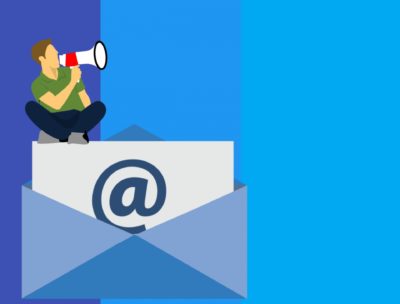You have something important to tell a colleague, but you’re on your way out the door for lunch. So, you dash off an email on your smartphone while riding the elevator and you’re done. Problem solved, right? Well… probably not. Depending on what you wrote in that email, you may have done more harm than good, and you may not have saved yourself any time.
Email is a powerful tool, but it’s not all-powerful. We use it for nearly all kinds of communication and it’s certainly a huge improvement over mailing a letter or sending a fax. But it’s not usually better than the phone. And yet, most people today would rather send an email than talk on the phone. In fact, companies like Coca-Cola and Goldman Sachs have nearly eliminated voicemail on office phone lines.
Email is simply not a great communication tool. It’s efficacy is limited. Research shows we’re less cooperative in email, and we’re more combative and negative as well. We’re also twice as likely to lie in digital communication than we are in person. Sixty-four percent of us have either sent or received an email that caused anger and resentment.
The purpose of any communication is to relay messages, and email isn’t even particularly good at that. We think we successfully convey sarcasm through email about 80% of the time, but that’s an incredibly optimistic estimate. In truth, research shows our closest friends and family members are no better at detecting sarcasm in email than a stranger.
The secret is to understand what email does well and use it for those messages. For some things, email is the perfect communication tool. Everything else should be communicated over the phone or in person. Here are the five kinds of communication that email is suited for:
-
Recaps and follow-ups: After a good phone conversation or a meeting, send an email summarizing what was discussed and what the next steps are. You can also send a checklist by email or assign specific tasks. If someone responds with a question or pushback, pick up the phone again.
-
Updates: Again, these are emails that follow either phone or face-to-face conversations. For example, you’re working on a project and need to send a timeline, or let everyone on the team know what progress has been achieved. An email is perfect for that, as people may need to archive that note and refer back to it.
-
Relaying simple information: When I talk about “simple information”, I mean information that requires little context or explanation. That includes dates, costs, delegation of tasks, etc. We’re sometimes tempted to use email as a tool for conflict avoidance. We assign people tasks that we know they don’t want; we try to settle arguments by giving the “final word” through their inbox. It can feel like email is saving us time and trouble by avoiding an argument. But that’s not what email does. Email creates arguments. It escalates conflict. Solve the problem in person and then send the settled details digitally.
-
Praise: It may seem odd to say that email is a great tool for sending praise, but I’ve found it works beautifully for this purpose. If you craft the note carefully, the recipient can save that email and return to it whenever they like. It’s a written record of appreciation. You can also include others on the chain so that the praise becomes public and invites more notes of approbation.
-
Sending attachments: This one is self-explanatory, I’m sure. Thank goodness we have a quick, cheap, ecologically friendly way to send documents, contracts, videos, photos and articles. Truly one of the great benefits of digital mail.
Here are some questions to ask yourself before you choose to send an email: does any of this information require debate or explanation? If so, pick up the phone. Did we cover this in a meeting or on a call, and I’m summing up what was discussed? Send the email. Does this information need to be searchable, printable or archivable? Go ahead and hit send. Is this criticism or clarification? Go see the person, if you can. If not, pick up the phone.

If you do end up sending an email, try to make it as efficient as possible, so as to protect the recipient’s time and attention. First, use a descriptive subject line that clearly lays out the urgency. For example: “FYI only: a list of prospective candidates for job opening.” Or: “Respond by Friday: your ideas for office configuration.” If the recipient doesn’t need to read that message immediately, putting that information in the subject line saves them from opening it and possibly losing focus on whatever they were working on.
The danger is, we think email is more efficient and persuasive than it is. One study asked people to convince others to fill out a brief survey, either through email or face-to-face. People thought they’d be about 50% successful when talking face-to-face, but actually succeeded about 70 percent of the time. Email went the other way: people thought email would be about 60% effective, but the results were close to zero. They convinced almost no one to complete the questionnaire when they asked through email.
Never send an angry email as a first response to someone’s mistake. As I mentioned, email makes us ruder and less cooperative; it escalates conflict. There is no such thing as “digital conflict resolution.” As venture capitalist Anthony K. Tjan wrote in the Harvard Business Review: “The irony is that while email, as an asynchronous channel, has the potential to be more thoughtful, it often promotes the opposite tendency to be immediately reactive. Why? Because the bark is almost always bigger than the bite behind remote digital shields.”
There is no such thing as “digital conflict resolution.”
If I could give only one piece of advice, it would be this: stop avoiding real-time conversation. Don’t be afraid to pick up the phone or visit someone’s desk. The human voice is brilliantly designed to convey meaning and we are biologically designed to pick up subtleties and context from both tone and body language. You lose a great deal of meaning when you use text alone.

There’s one more sense that gets lost in email: touch. Human touch is a powerful tool. Studies from both the University of Chicago and Harvard show that just shaking someone’s hand can lead to more honest communication and better outcomes in negotiations.
So, close your inbox and learn to love analog again. If an email won’t accomplish what you want (and it rarely does), pick up the phone. Or get really revolutionary and have a real-life conversation. You might discover you’re more productive, more efficient, and, in the end, happier.
